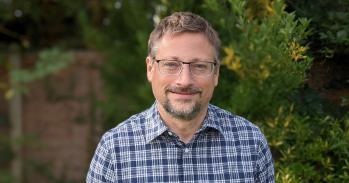University of Cambridge researchers have developed a novel strategy to tackle neurodegenerative diseases such as Huntington's disease: encouraging an individuals own cells to “eat” the malformed proteins that lead to the disease.
University of Cambridge researchers have developed a novel strategy to tackle neurodegenerative diseases such as Huntington's disease: encouraging an individuals own cells to “eat” the malformed proteins that lead to the disease.
University of Cambridge researchers have developed a novel strategy to tackle neurodegenerative diseases such as Huntington's disease: encouraging an individuals own cells to “eat” the malformed proteins that lead to the disease.
Huntington's disease is one of a number of neurodegenerative diseases marked by clumps of malformed proteins accumulating in certain cells of the brain. In Huntington's disease a protein known as huntingtin builds up in the neurons of the basal ganglia and the cerebral cortex leading to symptoms such as abnormal movements, psychiatric disturbances like depression and a form of dementia.
Professor David Rubinsztein, at the Department of Medical Genetics, has examined a process known as autophagy or "self-eating" that disposes of unwanted or malformed proteins in normal cells for new methods to combat the symptoms of Huntington's disease. Autophagy can be induced in mouse and fly models by using the drug rapamycin, an antibiotic used as an immunosuppressant for transplant patients. However, when used over the long term rapamycin has some serious side effects.
Professor Rubinsztein, along with Professor Stuart Schreiber's lab at the Broad Institute of Harvard/MIT, USA, and Dr Cahir O'Kane's group at the University of Cambridge's Department of Genetics, have developed a system to identify novel "small molecules" capable of inducing autophagy without the negative side effects of rapamycin.
This screening process identified small molecules that enhance or suppress the ability of rapamycin to slow the growth of yeast, though the selected molecules have no effects on yeast growth by themselves. Yeast is a single-celled organism and therefore less complex to study for initial screening purposes.
The research group found three molecules that enhanced the growth-suppressing effects of rapamycin in yeast and were also able to induce autophagy in mammalian cells independent of the action of rapamyacin. These molecules enhanced the ability of cells to dispose of mutant huntingtin protein in cell and fruit fly models and protect against its toxic effects.
Professor Rubinsztein commented: "These compounds appear to be promising candidates for drug development. However, even if one of the candidates does prove to be successful, it will be a number of years off becoming available as a treatment. In order for such drugs to be useful candidates in humans, we will need to be able to get them into the right places in the right concentrations, and with minimal toxicity. These are some of the issues we need to look at now."
This work is licensed under a Creative Commons Licence. If you use this content on your site please link back to this page.





